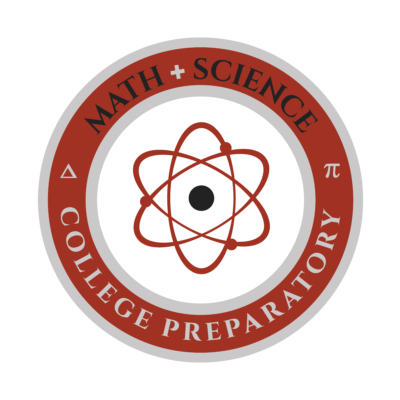STEM Academies
At Math and Science College Preparatory, students may participate in one of three STEM (Science, Technology, Engineering, and Math) Academies from the Project Lead the Way program. Through the Academies, students are educated in the various disciplines where they are supported through activities, projects, and problem-based curriculum. Students use various skills that include: thinking critically, identifying problems, and creating strong solutions. Ultimately, students are prepared for long term success through college and their career.
Requirements
Students can meet eligibility requirements through:
- Meeting a proficient level on placement exams in Math and English for 9th grade
- Working with their counselor when creating their 4 year plan or class schedule
Biomedical Science
The challenging PLTW Biomedical Science sequence allows students to investigate the roles of biomedical professionals as they study the concepts of human medicine, physiology, genetics, microbiology, and public health. Students engage in activities like investigating the death of a fictional person to learn content in the context of real-world cases. They examine the structures and interactions of human body systems and explore the prevention, diagnosis, and treatment of disease, all while working collaboratively to understand and design solutions to the most pressing health challenges of today and the future.
Course Descriptions
Course Description: In the introductory course of the PLTW Biomedical Science program, students explore concepts of biology and medicine to determine factors that led to the death of a fictional person.
Course description: Students examine the interactions of human body systems as they explore identity, power, movement, protection, and homeostasis in the body.
Course descriptions: Students follow the life of a fictitious family as they investigate how to prevent, diagnose, and treat disease.
Course description: In the final course of the PLTW Biomedical Science sequence, students build on the knowledge and skills gained from previous courses to design innovative solutions for the most pressing health challenges of the 21st century. They have the opportunity to work on an independent project with a mentor or advisor from a university, medical facility, or research institution.
Engineering
The High School Engineering Program is up to a four year sequence of courses which, when combined with traditional mathematics and science courses in high school, introduces students to the scope, rigor and discipline of engineering prior to entering college.
Course Descriptions
Course Description: Students dig deep into the engineering design process, applying math, science, and engineering standards to hands-on projects. The students work both to design solutions to a variety of problems using 3-D modeling software, and use an engineering notebook to document their work.
Course Description: Through problems that engage and challenge, students explore a broad range of engineering topics, including mechanisms, the strength of structures and materials, and automation.
Course description: Using Python® as a primary tool and incorporating multiple platforms and languages for computation, this course aims to develop computational thinking, generate excitement about career paths that utilize computing, and introduce professional tools that foster creativity and collaboration. PLTW is recognized by the College Board as an endorsed provider of curriculum and professional development for AP® Computer Science Principles (AP CSP). This endorsement affirms that all components of PLTW CSP’s offerings are aligned to the AP Curriculum Framework standards and the AP CSP assessment.
Course description: The knowledge and skills students acquire throughout PLTW Engineering come together in Engineering Design and Development as they identify an issue and then research, design, and test a solution, ultimately presenting their solution to a panel of engineers. Students apply the professional skills they have developed to document a design process to standards, completing Engineering Design and Development ready to take on any post-secondary program or career.
Computer Science
The Computer Science program engages students in real-world activities like creating an online art portal and using automation to process and analyze DNA-sequence data. These projects and problems engage students in computational thinking, challenge them to think big, and help illustrate how intricately computer science is woven into our society.
Course Descriptions
Course Description: Computer Science Essentials will expose students to a diverse set of computational thinking concepts, fundamentals, and tools, allowing them to gain understanding and build confidence.
Course Description: Using Python® as a primary tool and incorporating multiple platforms and languages for computation, this course aims to develop computational thinking, generate excitement about career paths that utilize computing, and introduce professional tools that foster creativity and collaboration. This course aligns with the AP CSP course.
Course description: Computer Science A focuses on further developing computational-thinking skills through the medium of Android™ App development for mobile platforms and utilizes industry-standard tools such as Android Studio, Java™ programming language, XML, and device emulators. This course aligns with the AP CS A course.
Course description: Cybersecurity introduces the tools and concepts of cybersecurity and encourages students to create solutions that allow people to share computing resources while protecting privacy. Nationally, computational resources are vulnerable and frequently attacked; in Cybersecurity, students solve problems by understanding and closing these vulnerabilities.
